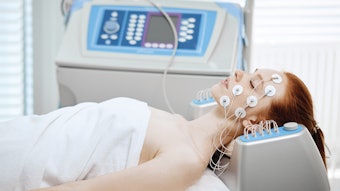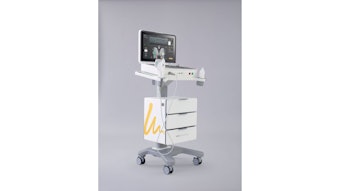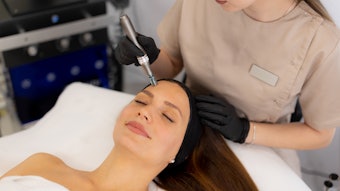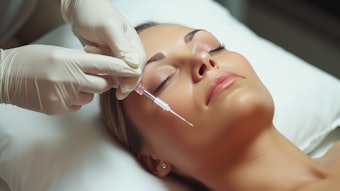
In order to know where you are going, you have to know where you have been.
This is true of many things, including the evolution of the spa field and the medical world. Skin care products and treatments have evolved considerably in direct proportion with scientific research—trends have pushed estheticians, physicians, cosmetic chemists and manufacturers to work together. The proliferation of medical spas is direct evidence of this collaboration. Building upon what is known, the cosmetic and medical industries are completing the puzzle, so to speak, to get a better picture about how to treat aging and problem skin.
Although today’s high-tech skin care is still moving into a more medical realm, the holistic approach of treating the whole to cure the part is very much alive—skin care professionals and physicians have started to layer their therapies, and have combined nutrition, supplementation and exercise programs into their protocols for total body wellness. What’s clear is that the next discovery may not be just a single ingredient or method, but rather an inclusive system of care that will address all avenues of health through a multitude of therapies.
The spa and medical office
The countless advances in cosmeceutical research and clinical esthetics have shaped the skin care, medical and spa fields, and these have guided the profession to where it is today. Greek philosopher Plato once described necessity as the mother of invention. Throughout the years, it has become clear that in order to beautify the outside layers of a person, internal and emotional health must be addressed, as well, for lasting results. Simply put, when you’re healthy, you’re beautiful, and when you’re beautiful, you’re healthy.
If you were to talk about the science of skin care in the 1970s, you would barely have had an audience. Esthetics was just beginning to gain popularity in the United States, and most of the skin care salons, as they once were called, offered nothing more than modified versions of European skin care. The esthetic industry imported its treatment methods, which consisted mainly of cleansing, pampering and relaxing, and this lasted into the 1980s until science came into the picture and gave skin care professionals one of the industry’s biggest discoveries: alpha hydroxy acids (AHAs).
This introduction could not have taken place without researchers who asked “Why?” and experimented with the stratum corneum. With the introduction of AHAs, educational facilities and esthetic programs were developed. Suddenly, estheticians armed with a little knowledge about skin physiology began asking more questions and probing U.S. manufacturers to provide even more education and better formulations to improve results and protect skin. And these manufacturers responded with better ingredients, vehicles, delivery systems and systematic protocols. The medical world took note of the scientific advances, and some early pioneers started to merge their practices with esthetic professionals, seeing the benefits of having a multidisciplinary approach.
The trend coaxed the medical field to create vanity drugs, such as Botox* and tretinoin, while the skin care field explored the use of more noninvasive products, such as AHAs and topical vitamin C. Today, it is plain to see how the professions mirror each other. For example, estheticians have their own high-tech solutions and cosmeceuticals with designer formulas featuring exfoliators, antioxidants, enzymes, botanicals and peptides. On the other hand, the medical world has a variety of injectables, such as dermal fillers, including hyaluronic acid and human collagen, as well as lasers, peels and more invasive surgery. Spas that provide feel-good services offer respite for clients suffering from chronic and cultural stress, while medical offices offer tranquilizers and antidepressants to help patients deal with the same kinds of stress. Aromatherapy, herbal teas and massage in the spa offer a holistic solution for insomnia, while the medical world can offer prescription sleep aids. For hair loss, spas can offer topical solutions, nutritional guidance and supplements, while physicians can suggest hair-growth drugs and transplants.
The transformation to medical spas
The lack of noninvasive solutions, human touch and personal care, in addition to the status of the United States’ failing health care and insurance plans, has led physicians to explore the spa world. By the same token, the need for more clinical solutions has moved spa owners to embrace medical solutions. Together, the spa field and medical realm complement each other within the medical spa environment, where services are layered, combined and cross-promoted. But there is still a need to go further. In relationship terms, the medical and esthetic worlds have been dating, are now engaged, but are not married ... yet.
What has been learned through this collaboration is that there are a multitude of avenues that can be used to lead clients or patients to their goals. This line of investigation has taken researchers beneath the surface of skin, looking at the internal aspects of the body, unfolding the mechanisms of inflammation, disease, hormones and their complex interactions with the epidermis. The biggest discovery only confirmed what should have already been known: Everything is connected—all organs, systems, tissues and emotions. Knowing this, the current trend in medical spas is to make realistic changes in internal health and emotional composition to augment therapeutic esthetic treatments and ultimately produce profound results in clients.
What’s in
It is now known through direct clinical examination that the key to longevity, youth and health is found at the cellular level. Cellular research has demonstrated that aging is more than skin deep. It involves internal, external and emotional factors, so now medicine is closer to the spa and esthetics closer to medicine. Rigorous clinical esthetic education programs are an absolute necessity for every medical spa practitioner, because professionals need to know what’s in and what’s out when it comes to methods, solutions and research. See What’s In.
The next trend is sleep reform. The effects of sleep deprivation are only now coming to light, and more medical and spa services are going to address the issue and its underlying causes. Expect to see topical or oral agents, including botanicals such as chamomile, valerian and lavender, and hormones such as melatonin, in addition to an increase in the use of prescription sleep aids.
Partnering between estheticians and physicians yields great results, but they are only as good as the client’s commitment level; therefore, programs that do not consider client commitment will fade. Today’s medical spas offer proven holistic or alternative therapies, such as massage and body treatments, but they largely have a no-fluff attitude. This will only continue because fewer and fewer people are gong to a spa just to get a moisturizer. Clients want to indulge, feel good and leave with real results—they want to be radiant and beautiful. For example, simple nail manicures are out. What’s in are manicures that include hand treatments, massage and specific solutions for problem nails and skin. Single treatments are out, and in their place, custom-designed service packages have become the norm. This custom-packaging trend has only increased, and will help form the core of the future of medical spas—inclusive health programs.
Inclusive health programs
The creation of inclusive health programs stems from the history of health care itself. In the beginning, patients simply went to the physician for medical care or traditional medicine. Because of dissatisfaction with the results or incomplete care, many individuals, desperate for something different, dabbled in alternative medicine in place of conventional medicine. There were also those who used complementary medicine—therapies used together with conventional medicine. As a result of the integration of outside practices, the term “integrative medicine” surfaced. But the practice of integrative medicine is not complete. Although it allows some therapies to be included, these treatment modalities are often secondary and not as good as primary medical care. On the whole, the current level of health care is disconnected from the very patients it is used to treat.
Inclusive health programs represent the next logical step in the sequence of today’s medical and esthetic care. They include all therapies and are based on a patient’s specific needs. They offer a multidisciplinary approach that is comprehensive and all-encompassing. Inclusive health therapies work in tandem to create the most complete health care programs for overall wellness and cosmetic concerns.
They do this using a three-pillar approach that addresses the mind, skin and body through a systematic protocol that includes programs that focus on external, internal and emotional concerns. To summarize, a medical spa could design its own inclusive programs by using the following three-pronged formula:
1. External care. Used to address skin, the body’s largest organ and the first line of defense, external care utilizes topical treatments, such as esthetic facials, appropriate skin care regimens and cosmetic medical services.
2. Internal care. Needed to support all aspects of a healthy lifestyle, internal care includes nutrition, supplements, physical activity and prescription medication.
3. Emotional care. Utilized to help clients achieve psychological and social balance, emotional care includes feel-good services that can be offered at spas, stress-reduction activities, such as exercise, and support groups to nurture the psyche.
Working hand-in-hand
Because everything in the body is connected, inclusive health therapies must be connected, as well. Inclusive programs offer a synergy of care largely absent from today’s medical spa market. Practitioners in the inclusive medical spa work hand-in-hand to map the best course for each patient. Every aspect of well-being is covered, never losing sight of the client’s concerns or wishes. Furthermore, every inclusive program should be as unique as each of your clients. Because skin care and anti-aging are not one size fits all, this revolutionary strategy offers a myriad of cutting-edge treatments aimed at making people healthier, happier and ultimately more beautiful, which will carry the industry to the future and beyond.
GENERAL REFERENCES
AH Bittles, Human Aging: A Cellular Phenomenon or Evolutionary Determinant, I J Antroph, 1 4 289–296 (1986)
American Institute of Stress, The, Job Stress, www.stress.org/job.htm (Accessed Oct 17, 2008)
B Brazzini, I Ghersetich, J Hercogova and T Lotti, The neuro-immuno-cutaneous-endocrine network: relationship between mind and skin, Dermatol Ther 16 2 123–31 (2003)
B Frei, Efficacy of dietary antioxidants to prevent oxidative damage and inhibit chronic disease, J Nutr 134 3196S–3198S (2004)
CM Aldwin and DF Gilmer, Health, Illness and Optimal Aging: biological and psychosocial perspectives, 1st ed, Sage, Thousand Oaks, CA, 227–253 (2004)
DM Eisenberg, et al. Unconventional Medicine, N Engl J Med 328 246–252 (1993)
Doctors Waking Up to Benefits of Sleep Deprivation Treatment for Depression. Web MD www.webmd.com/news/19991116/benefits-sleep-deprivation-depression (Accessed Sept 23, 2008)
E Van Cauter, et al., The Impact of Sleep Deprivation on Hormones and Metabolism. Web MD www.medscape.com/viewarticle/502825?src=search (Accessed Sept 23, 2008)
H Murad, The Cellulite Solution, St. Martin’s Press, New York (2005)
H Murad, Wrinkle-Free Forever, St. Martin’s Griffin, New York (2003).
H Murad and M Tabibian, The effect of an oral supplement containing glucosamine, aminoacids, mineral, and antioxidants on cutaneous aging, J Dermatol Treat 12 47-51 (2001)
HL Hu, et al., Antioxidants may contribute in the fight against ageing: an in vitro model. Mech Ageing Dev 121 1–3 217–230 (Dec 20, 2000)
IZ Nagy, The membrane hypothesis of aging, CRC Press, Boca Raton, FL, 3–10 (1994)
JE Birren, KW Schaie, RP Abeles, et al., Handbook of the Psychology of Aging, 6th ed, Elsevier, New York, 85–91, 163–167 (2006)
P Ritz, Chronic cellular dehydration, J Gerontol 56A 6 349–352 (2001)
Roper Starch Worldwide Survey on Stress, www.roper.com (Accessed Jun 4, 2008)
TBL Kirkwood, The origins of human aging, Phil R Sc Lond B 352 1765–1772 (1997)










